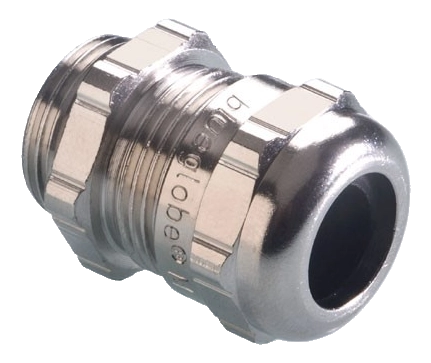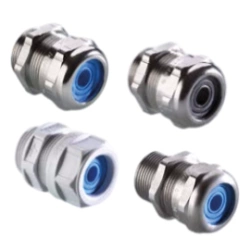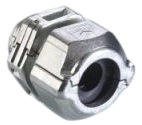Railway Glands
Railway cable glands are components designed for applications in railway rolling stock, where the priorities are fire safety, durability, and reliability. They meet the requirements of standard EN 45545-2, regarding the reaction of materials to fire, smoke, and gas toxicity. Thanks to appropriately selected materials and a robust design, they are intended for use both inside and outside of railway vehicles.
Railway glands combine high environmental resistance with passenger and crew safety requirements. The variants available in the offer include both shielded (EMC) versions and specially sealed ones, adapted for limited installation spaces and harsh operating conditions in rail transport.
Characteristic features of the offered railway glands

Compliance with standard EN 45545-2
Materials meet the requirements for reaction to fire, low smoke emission, and gas toxicity, in accordance with HL1 – HL3 levels.
High environmental resistance
The products are resistant to UV radiation, temperature fluctuations, vibrations, and contact with oils, greases, and other typical chemicals.
EMC protection
Available versions enable effective signal shielding, preventing interference in control and data transmission systems.
Durability and assembly reliability
A robust design ensures operational safety even under conditions of frequent servicing and intensive use.
Compact installation variants
Special versions of glands designed for limited spaces in railway vehicle structures.
Certified safety
The glands are certified and tested by independent institutions in accordance with railway industry requirements.

Typical applications of railway glands
- cable installations in passenger cars and locomotives
- automatic door and traffic control systems
- HVAC systems in railway rolling stock
- lighting and passenger information systems
- roof, underfloor, and external wiring
- monitoring and data transmission systems (e.g., CCTV, Ethernet)

Pflitsch blueglobe fire protection - brass cable gland
- Material:
- Insert material:
- Ingress Protection:
- Application features:
- Certificate:
- Temperature range:

Pflitsch blueglobe TRI fire protection - EMC cable gland
- Material:
- Insert material:
- Ingress Protection:
- Application features:
- Temperature range:
- Certificate:

Pflitsch blueglobe with multiple inlet - cable gland
- Material:
- Insert material:
- Ingress Protection:
- Temperature range:

UNI corrugated conduit transit - cable gland for corrugated conduits
- Material:
- Insert material:
- Ingress Protection:
- Certificate:
- Temperature range:

Pflitsch UNI Split Gland HD - split cable gland
- Material:
- Sealing range in millimeters:
- Ingress Protection:
- Application features:
- Certificate:
- Temperature range:

Pflitsch UNI Split Gland - cable gland
- Material:
- Sealing range in millimeters:
- Ingress Protection:
- Application features:
- Temperature range:
- Certificate:

Pflitsch UNI EMC Dicht fire protection - cable gland
- Material:
- Insert material:
- Ingress Protection:
- Application features:
- Temperature range:
- Certificate:

Pflitsch UNI Multiple fire protection - cable gland
- Material:
- Insert material:
- Ingress Protection:
- Application features:
- Temperature range:
- Certificate:

Pflitsch UNI Dicht fire protection - cable glands
- Material:
- Insert material:
- Ingress Protection:
- Application features:
- Temperature range:

Pflitsch blueglobe fire protection - plastic cable gland
- Material:
- Insert material:
- Ingress Protection:
- Application features:
- Temperature range:
- Certificate:

Pflitsch UNI flange UFLD3 54 Zn - splittable cable gland
- Material:
- Thread:
- Sealing range in millimeters:
- Ingress Protection:
- Application features:
- Temperature range:

Pflitsch UNI flange UFLG3 54u - splittable cable gland with 3 threaded holes
- Material:
- Thread:
- Sealing range in millimeters:
- Ingress Protection:
- Application features:
- Certificate:
- Temperature range:

Pflitsch UFLD3 54u - splittable cable gland with 3 through holes
- Material:
- Thread:
- Sealing range in millimeters:
- Ingress Protection:
- Application features:
- Temperature range:
